Opinion
A fable: Misappropriation Bill presented in Parliament of Sovereign Kleptocratic Republic of Chauristan

by Usvatte-aratchi
No, you will not find it among the five ‘Stan Countries’ in the massive spread of Eurasia. Go further south and further east until you meet a sizeable island, not quite utima thule. Ask any forlorn-looking young man in that land where cones on stupa nearly scrape the underbelly of heavens, ‘In this seemingly pleasant land, what is the profession where a person with no inherited wealth, no education, and no professional skills can amass vast wealth in less than five years?’ The young man turned to him as if the stranger were a gross ignoramus and answered, ‘Why silly, politics? This is where asinus rex est.’ ‘Did you say, a land where the donkey is king’? How so?’ asks the visitor. ‘By misappropriating public funds’, gravely replied the young man, ‘to continue which, there is today a Misappropriation Bill presented before the House. It is mainly for misappropriating public funds, first by misallocation’. ‘That is probably why those rich thieves thrive luxuriantly outside a jail. In other countries, such men and women are housed at state expense in jails and at somewhat less comfort than princely. The state owes at least that little to those geniuses, who brought such immense ill fame to this land.’
A few days ago, the Chaurisri, the president of the Chaurigrha (that is the name of the Parliament like the Knesset in Israel or the Duma in Japan) announced the first reading of the said Misappropriation Bill. Since 2005, the annual Misappropriation Bill has been the principal instrument used to plunder the revenue of the state. Revenue (misnamed government income) of the state comprises tax revenue, government income and proceeds from loans raised by the government, each year. The misappropriation has been so gross, systematic, persistent and thorough that the kleptocratic republic won infamy in international fora including lending institutions, as a dark hole that sank money that should have benefited the common people of that country. As was inevitable, the Treasury was empty and the people were left with only foul air to breathe. Yet, Chauripurohit (Minister of Finance), who is also Chauripathi, announced in Chaurigrha that corruption in that land was but ‘a fable’. If the purohit spoke the truth, which he betimes does, then the truth in Chauristan is incredibly fabulous (Fable and fabulous come from the same Latin word ‘fabula.) At the bottom of that dark hole sat a spreading family of fat cats whose skills were confined to deception and corruption. They could not catch so much as a mouse who dared to pilfer some of the Swiss cheese they had imported to fatten the cats. One of the lenders to Chauristan was so concerned that its funds should not be misappropriated, that it appointed its own accountants and auditors when lending to the government of Chauristan. Knowledgeable taxpayers avoided and evaded tax payments because they knew that their taxes only would fatten the family of cats who would litter more. Other taxpayers and potential taxpayers flew out in flocks. The cost of those preventive measures became a part of the loan that the taxpayers of Chauristan would eventually repay.
Three parties misappropriated funds for their benefit. First the members of the Executive Branch of the government from the highest to the lowest. Those sums were fittingly very high. It is commonly averred that they siphoned 20 percent of any loan proceeds and of the price of large contracts. The contractors themselves plundered public funds by using sub-standard material, cheating on measurements and abandoning projects fully paid up but only partly done. There were three important consequences. First, the highest in the executive branch who decided on which projects or which version of a project would be selected, always and inevitably opted for the highest-priced project on offer. The reasoning was quite simple: 20 percent of $20 million raised a bribe of $4 million and 20 percent of 100 million gave $20 million and some loans exceeded a few billion US dollars. There were more than a few who shared each loot. Second, all large-scale projects were financed with loans from overseas with some marginal contribution from tax revenue. The Family avoided accepting offers of projects from countries and companies that would not collude with the Family to offer the cut that the Family wanted and further, deposit the bribe in banks outside Chauristan. So solicitous were they for the good name of Chauristan that they kept their gold securely in a locked Pandora’s Box. The most egregiously corrupt instance was when the government of Chauristan turned down a Light Rail Project offered almost free by a friendly government. Thirdly, as projects which had been accepted became either completely or partially unproductive, the burden of repayment fell on taxpayers, whose income had not increased at all. If you built a house and nobody took it on rent, you would pay the loan to the bank from your monthly salary and that at the cost of milk for your baby. The responsibility is yours for having put up that house in a devil’s cemetery. In reaction, when the burden of taxation became too heavy to bear, some refused to earn beyond a certain upper limit, some packed their bags and looked for refuge overseas and the very poor withered on the vine like grapes in winter in northern Italy. Loans were used to build 40 foot-wide roads on which crocodiles slumbered in the sun and buffaloes gambolled idly, airports, where hangars stored rice and sheltered no airplanes, ports where ships did not call, theatres where ghosts (not Ibsen’s) found permanent residence and where tall columns kept watchful guard over teals nesting in the bushes near the Beira. They did not produce an income adequate to service the loans and people in other sectors were starved to pay off loans while the cats and (Kaputas) crows grew visibly fatter. When those other sectors were destroyed wilfully by one member of the Family and by circumstances well beyond the control of the Family, the economy fell with a thud and woeful consequences fell upon the public. Yet, the cats grew fatter. Purposely and wilfully, one member of the Family denied large sums of tax revenue to the government and diverted that flow to Family friends who also had helped pay for their election to office and also to evade justice. The problem was further complicated as some of these loans were from overseas and had to be serviced with foreign currency. The value of the domestic currency in both foreign exchange and domestic markets tanked. Price inflation soared higher and faster than a kite in August on Galle Face Green.
The second group that misappropriated funds were rich traders who had power and influence over the said Family. Those had gained from the losses to the government treasury and at the same time to the public. The current Misappropriation Bill provides several honeypots that the kleptocrats must already savour. Government enterprises making good profits are up for sale to the private sector, even to the very private sector enterprises and individuals who had plundered the public purse. The capital that the Fat Cats publicly denied owning will suddenly emerge from where they were hidden, and black money will suddenly whiten and glisten and so will be born the Sri Lanka oligarchs. Wealth now hidden in properties in Australia, Europe, Africa, islands in the Indian Ocean and in the Caribbean will flow into Chauristan. Several miracles will occur simultaneously: black money will glisten and whiten blindingly; plunderers in kapati suits will fatten further in Parisian suits and Italian shoes; Sri Lanka’s capital account in the balance of payments will be in the black temporarily. It will be perestroika all over again but in a teacup. Voters need to understand these shenanigans well and elect representatives who will confine plunderers in jail and recover the loot forthwith.
The third group of plunderers was bureaucrats at very high levels. Senior Advisors to presidents, the prime minister and other ministers were notoriously corrupt. Many were caught with their sticky fingers in the kitty but skillful lawyering and unscrupulous politicians installed them back in higher positions and with substantially higher pay. And so merrily did they plunder; the Chauripurohit was right; it was fabulous (fable-like).
The Misappropriation Bill was presented in Chaurigrha as if there was only a macroeconomic problem ailing the economy. All the talk was about primary balances and stability in the economy. There was not a word about the horrors committed by the misallocation of resources. They were fables: my left cleft foot! Everyone breathed the macro-economic vapour and in the ensuing stupor forgot that it was misallocating resources and mismanaging individual projects that summed up to the macro-economic disasters. Thirteen years after the war in Chauristan, defence expenditure keeps on rising at the cost of other sectors including education and health. It is true that defence forces employ large numbers who would otherwise go unemployed and that these young men and women dig trenches and fill them back. Some of them have started making bags for politicians; a few will carry them. But what is the invasion against which the armed forces ever defended Chauristan? Chauristan armed forces cannot withstand for a fortnight even a minor invasion by sea, air and land from any but the smallest powers in its neighbourhood. They failed miserably to prevent a well-planned attack on worshippers at prayer in church on Easter Sunday in 2019, reliable information from other countries notwithstanding. Defend the country: flipping claptrap (Andy Capp might have said). The armed forces in Chauristan arefor the protection of the government against its own people and not for the protection of the state against other states. (One way of confounding the public mind is to confuse the use of the terms state and government so that when people attack a government it is dressed up by government as an attack on the state. Aragalaya attacked the government then in power and not the state of Sri Lanka. They were not traitors to the state of Sri Lanka. In contrast, Eritrea became a separate state after she broke away from Ethiopia. The people who rebelled were traitors to the state of Ethiopia.) Chauripurohit during the budget debate threatened to use armed forces to protect his government from the wrath of the public . That call, in principle, is problematic. After all the armed forces are of the people. But the armed forces are there to maintain public order. Good judgment is of the essence Why not call that outfit the Ministry of Internal Security? Why call a rose by another name?
There is one organ of government that will protect the people from depredation by the government: the judiciary. The judiciary has neither sleuths nor guns nor tanks. The judiciary needs the active support of some important parts of the executive to bring enemies of the people (Ibsen, again) to justice. When the executive fails in its duties and, in fact, colludes with other parts of government to harm the governed, the judiciary is helpless. Allocation is determined by the executive branch of government which can starve the judicial branch of resources. It is the function of the legislature to correct such misallocation.
Allocating massive sums over two decades to projects that overran their originally budgeted resources and construction periods ensured that those projects would bring about waste of capital and minimal rates of economic growth. Of some 5,000 head of cattle imported from New Zealand to Chauristan 90 percent died within a year. Good project management could have eliminated all this waste. In fact, some parts of Chaurigrha brought out these dreadful facts but the mass in that august assembly could not make the connections.
The government of Chauristan is a swamp that drains the flood of unemployed in the economy. Politicians continually widen and deepen that swamp to keep their noses above water. There is roughly one government employee for every 15 persons in the population. There is roughly one teacher per 15 students in schools. More than 20 percent of the labour force in the country work overseas and the recent higher rate of outflow from the country is raising the stock. In the face of this stark evidence, purohits in the land blame the education system for unemployment in the economy. They don’t ask how China, Korea, Thailand, Malaysia, Mauritius recently and Europe, over centuries, employed large increases in their labour force at rising levels of productivity. They did so because governments and entrepreneurs employed increasing populations. And Chauristan is distinguished by its repetitive kleptocratic governments, the scarcity of productive enterprises and the plenitude of unproductive labour.
The stranger exhaled a long breath, looked the young man in the eye and said: ‘Every prospect in this land pleases me but the dominant elites, whatever robes they wear, disgust’. And the traveller weary, wended his wayward way.
Opinion
Learning from global models to address flooding and water shortage in Sri Lanka

by Sudharman Siripala
Sri Lanka is grappling with the increasing threat of climate change, which has led to unpredictable weather patterns. The country faces a dangerous combination of flooding in some regions and water shortages in others, a situation exacerbated by shifting rainfall patterns. Rivers originating in the Central Hills, such as the Mahaweli, Kalu, and Kelani, flow through much of the country, but these water sources are not being distributed evenly. Districts like Monaragala and Hambantota, located in the dry zone, are experiencing severe water shortages. To address this challenge, experts suggest the development of an interconnected river system to harness excess water during floods and redirect it to drier areas, ensuring a year-round water supply for agriculture and daily use.
Global Case Studies in River Management
Several countries facing similar water-related challenges have implemented successful water management systems that Sri Lanka could adapt to its unique circumstances:
The Netherlands – Room for the River Programme
The Netherlands, a country prone to flooding, widened its rivers and relocated dikes to create floodplains. This approach allows rivers to overflow without damaging urban areas, while preserving water flow and natural habitats. Sri Lanka could apply this concept by designating specific riverbank areas for temporary flood storage.
China – South-North Water Transfer Project
China’s massive project channels excess water from the flood-prone Yangtze River to drier northern regions. This system of canals and reservoirs could inspire Sri Lanka to divert water from rivers in the Central Hills to drier areas in the south and east.
Bangladesh – River Interlinking Projects
Bangladesh has implemented river interlinking projects to redistribute water from flood-prone rivers, such as the Brahmaputra, to drier regions. Sri Lanka could link its major rivers like the Mahaweli and Kelani to smaller rivers in water-scarce districts to balance water distribution.
India – National River Linking Project
India’s National River Linking Project connects major rivers to manage both floods and droughts. Sri Lanka could use similar strategies, connecting rivers around the 500-foot contour line in the Central Hills to help distribute water more effectively.
United States – Mississippi River and Tributaries Project
The Mississippi River system combines levees, floodways, and diversion channels to manage flooding. Sri Lanka could adopt similar flood-control measures in vulnerable river basins such as the Kelani and Kalu.
Japan – Underground Reservoirs and Flood Channels
Japan’s G-Cans Project in Tokyo channels excess water into underground reservoirs to prevent urban flooding. A similar underground system could be implemented in Colombo and other flood-prone cities in Sri Lanka.
Singapore – Marina Barrage
Singapore’s Marina Barrage serves as both a flood control measure and a water supply resource. Sri Lanka could develop similar systems to control flooding in urban areas and ensure water availability during dry spells.
Thailand – Chao Phraya River Basin Management
Thailand uses diversion channels in the Chao Phraya River Basin to prevent flooding in Bangkok and direct water to agricultural areas. Sri Lanka could replicate this by creating diversion channels to supply water to its agricultural zones.
Actionable Solutions for Sri Lanka
Develop an Interconnected River System
Establish water diversion channels along the 300-500 meter contour lines of the Central Hills to capture excess rainfall during floods and redirect it to drier areas.
Build Reservoirs and Storage Tanks
Construct reservoirs to store diverted water, ensuring a steady supply for agriculture and domestic use. Sri Lanka has around 14,000 ancient tanks out of 30,000 that could be revitalized for this purpose.
Improve Urban Flood Defenses
Drawing inspiration from Japan and Singapore, build underground reservoirs and flood channels in cities like Colombo to mitigate urban flooding.
Strengthen Watershed Management
Restore natural floodplains and create wetlands to absorb excess rainwater, as seen in the Netherlands, helping to reduce flood risks.
Encourage Public-Private Partnerships
Foster collaboration between the public and private sectors to fund large-scale water management infrastructure, leveraging models from China and the United States.
Leverage Technology
Utilise modern forecasting and real-time water management systems, similar to those in Bangladesh and Thailand, to monitor water levels and manage river flows dynamically.
International Collaboration
Form partnerships with countries that have successfully implemented flood control and water management systems to share expertise and technology.
Sri Lanka’s dual challenges of flooding and water scarcity, compounded by climate change, require immediate action. By developing an interconnected river system and learning from successful global water management models, Sri Lanka can mitigate the effects of floods while ensuring a sustainable water supply for agriculture and daily life. It is crucial for the country to act now, as these solutions have the potential to transform Sri Lanka’s water management system for the better.
Sudharman Siripala Managing Director of Geoinformatics Group and a Registered Licensed Surveyor, specializes in geo-spatial applications. He also serves as a freelance value chain consultant for Vivonta Green Tech Consultants (www.vivonta.lk)
Opinion
Doctor’s plight

Some people have found fault with a female doctor for not coming forward to identify her rapist and help make him pay for his crime.
Do they not realise the emotional toll of facing her rapist again?
There should be a way for survivors to testify directly to the judge without enduring such distressing encounters. Making a victim relive her trauma in this manner is akin to subjecting her to the ordeal all over again.
A Ratnayake
Opinion
Developing attitudes of schoolchildren for development
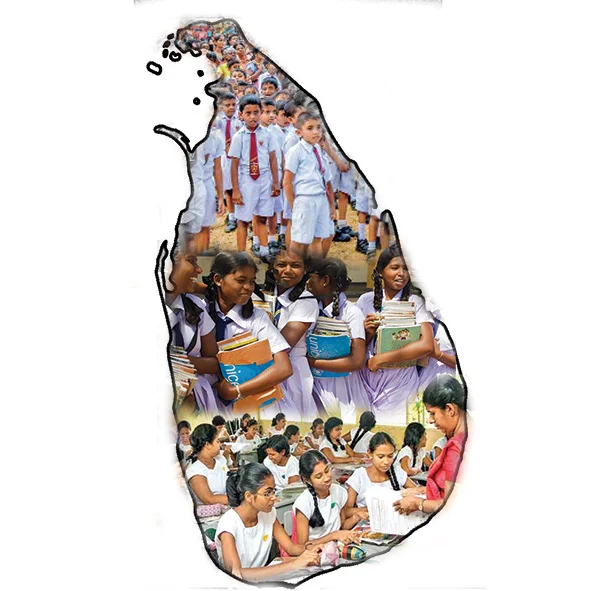
Sri Lanka was once at an economically comparable level with some of the world’s most developed countries in the 19th century. However, despite our country’s potential, we are still striving to fully develop. Many people often blame politicians, government officers, or various sectors for the situation. However, I believe the root cause of these issues lies not in any individual or group, but in the lack of good attitudes within our society.
We are investing significant resources into our education system, which is funded by the taxes of hard- working citizens. However, when we examine the outcomes, we realise that the academic achievements of our graduates alone are not enough. There are instances where professionals, despite having the necessary qualifications, fail to uphold ethical standards. In some cases, this even results in malpractice or harmful actions that damage our country’s reputation and progress. This highlights the gap between academic success and real-world responsibilities.
The education system, which is currently focused on competitive exams and rote learning, does not emphasise the development of attitudes and character in students. While our students are academically capable, many lack the qualities required to contribute positively to society. This lack of focus on social values, such as patriotism, selflessness and respect for elders, is holding us back from achieving the level of progress we deserve.
To address these concerns, I wrote to His Excellency, the President of Sri Lanka, on 24th September 2024, proposing education reforms that emphasise not only academic qualifications but also attitudes, ethics, and social responsibility. I suggested a holistic approach to university admissions and government recruitment, incorporating moral integrity, character, and extracurricular involvement, key traits for fostering well- rounded, responsible citizens. More importantly, I strongly recommended introducing a compulsory school subject, with both theory and practical components, focused on attitude development, which would be evaluated in university admissions. Encouraging extracurricular participation alongside academics will help shape ethical and socially responsible individuals.
I am pleased to inform you that the President, recognising the importance of these reforms, has directed the relevant ministries (by a letter dated 24th October 2024) to explore integrating these ideas into the education system. This marks a crucial step in transforming the values and attitudes of our youth for the nation’s benefit.
However, meaningful change requires collective effort. Parents, teachers, students, and citizens all play a role in shaping Sri Lanka’s future. Together, we must instill responsibility, ethics, and patriotism in the next generation. I invite you to share your thoughts and suggestions on further enhancing the values and attitudes of our youth. Your feedback will be invaluable in building a brighter future for Sri Lanka, one driven not just by knowledge, but by integrity and character.
Dr. Mahesh Premarathna
Research Fellow, National Institute of Fundamental Studies, Sri Lanka Email: mahesh.pr@nifs.ac.lk
-

 News5 days ago
News5 days agoSeniors welcome three percent increase in deposit rates
-

 Features5 days ago
Features5 days agoThe US, Israel, Palestine, and Mahmoud Khalil
-
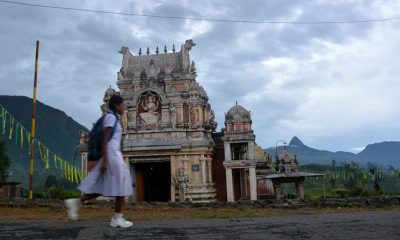
 News5 days ago
News5 days agoScholarships for children of estate workers now open
-
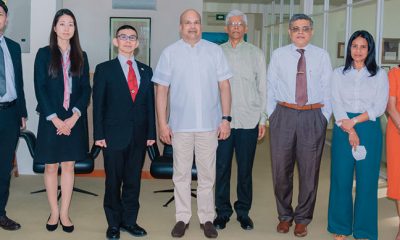
 News6 days ago
News6 days agoDefence Ministry of Japan Delegation visits Pathfinder Foundation
-
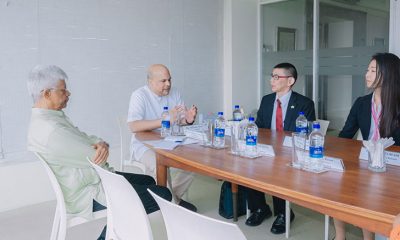
 News5 days ago
News5 days agoJapanese Defence Delegation visits Pathfinder
-

 Foreign News4 days ago
Foreign News4 days agoBuddhism’s holiest site erupts in protests over Hindu ‘control’ of shrine
-

 Editorial6 days ago
Editorial6 days agoWhen promises boomerang
-
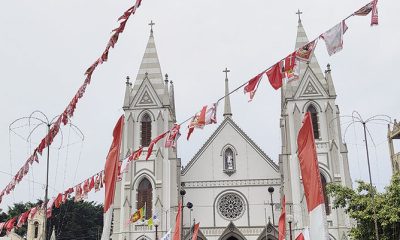
 News6 days ago
News6 days agoBan on altar girls upsets nuns, stirs talk on women’s church roles











